Faith Coloccia is an artist based outside of Seattle, Washington. I learned of her photography, mixed-media album artworks, and her musical project Mamiffer (which also includes Aaron Turner), about a year ago and became fascinated by her blog and tumblr webpages (which she seems to use as an archive and sketchbook—charting her musings, gleanings, and productions—including images of her latest designs interlaced with diverse inspirational images by artists Theodor Kittelsen and Giséle Vienne, and from the ancient site Çatal Hüyük). In the following interview I had a chance to write back and forth with Coloccia and learn more about her intermedia practice, which shifts and merges visual and sonic approaches. We discuss her techniques, influences, and processes—from her unique visual composition transcriptions, to the integration of sympathetic magic in her work, to her archival and material research.
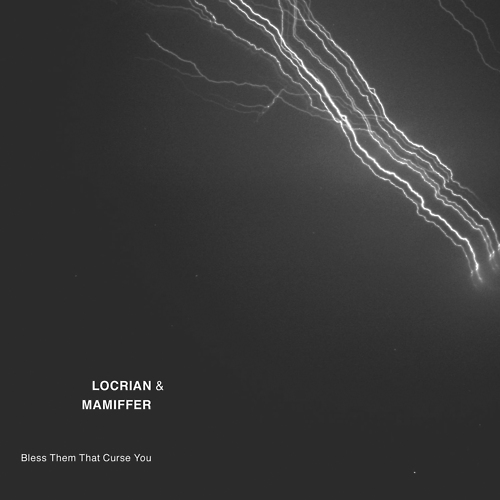
Faith Coloccia, album cover of Mamiffer/Locrian's "Bless Them That Curse You," SIGE Records/Utech Records, 2012.
Amelia Ishmael: I am interested in how you navigate between your work as both a visual artist and musician. Your recent artwork for the recent Mamiffer/Locrian split LP “Bless Them That Curse You” album provides such an expansive depth in dialogue with the sounds that it encloses. Could you tell me a bit about how this project developed?
Faith Coloccia: The method I use in determining where my artwork goes, especially for music releases, is one of subtraction, and deduction. I create an overabundance of images, and then subtract to determine which are important or fit.
The artwork for the Mamiffer & Locrian release was created using this subtraction process, and also sympathetic magic. I get very connected to phenomena that occur around important or meaningful events, such as the lightning storm we drove through in Wisconsin to get to Chicago to record with Locrian. I feel like the mark of this event was made with the chance photograph of lightning (seen on the record’s cover). I also like transposing different times and places, and collapsing them into one event. Many of the photos used fit with the feel of the recording but were taken in Finland during the winter, during another meaningful collaboration experience. I subvert the place the photo was taken by integrating it with the other images in the artwork.
AI: Could you tell me more about sympathetic magic? What is it? How does it influence your decisions?
FC: Sympathetic magic is like creating an event before it happens, seeing it as if it has already happened. If things can be mentally associated they can “magically” influence each other. It includes reading direct or indirect observation of the placement of objects in space, feeling answers, and using forms of divination.
The lines, shapes and patterns in weather, stars, dirt, fallen leaves, the palm of the hand, cards, chance, dream, coincidence and synchronicity, are magically connected to the empirical world—past, present, and future, and all can be read. I was raised with tarot and my mom telling me stories about found objects and their resonance. She could feel who the previous owner of the object was, and what kind of importance the object had for someone, as if things which have once been in contact with each other continue to act on each other at a distance even after the physical contact has been severed.
I feel that it is a beautiful way to live. Seeing how every thought or action has importance and meaning and affects and connects all things in your life. It can make you very aware of your environment, and it gives me a spiritual, and grounded, basis from which to create and hopefully affect other people positively.
AI: Did you know that you would use that lightning photograph for the album when you took it? It seems like it was haunting you during the recording…
FC: No, I had no idea if the photo would even turn out, since the film had not been processed at that point. It was brought up as a possible cover image while the album was being mixed in Seattle, and everyone involved chose that photo for the cover. That drawing was done by Aaron. We were all talking about the storm in the studio in Chicago.
AI: Could you tell me about the more abstract textures that take place throughout both of these projects? For instance, there’s this moment in the split album where full-frames of the storm are paired with this really expressionistic swarm of dark inks. When paired with the photographs there’s this really primal and raw energy that emits from the image. It’s made even more powerful in relationship to the Finland forest images, which feel very straightforward in contrast, and with the picture format, which is a clean square around the photographs. But here, the image’s boundaries are looser, as though they are spilling across the surface…
FC: The paintings are made with ash, gesso, and razors.
The balance between the paintings and the photographs intrigued me, and I thought that I was creating visual discord, like a representation of cognitive dissonance. I wanted the visual space to have a breath of nature and calm so I used the photographs, which are abstract in their own way, so in that sense harmony was restored.
I love to see snow as “blank” like a missing part of the photograph. The snow photographs from Finland almost look like blank bodies lying on the cold winter ground. This fit with one of the songs lyrics on the record: “Metis.” The snow or blankness was represented in the paintings by using gesso as a non-pigment.
AI: One of the aspects that drew me to your work is that there seems to be a simultaneous interest in looking as well as hunting and gathering materials. You’ve talked a little about your personal archive of images and ideas and how you will return to this archive, like a well, and draw new inspirations. Could you tell me now about this “sampling” of materials, almost like material research that you engage in?
FC: Yes, I love to hunt for materials! Searching, finding, exploring, and happening upon things are great parts of my process.
As for the process of looking, I haven’t thought about that lately, but I do like doing the “wrong thing.” When I think something should look a certain way, I like to do the opposite, and get a great internal feeling and good visual result. This happens most when I do graphic design. I am interested in how things are “‘connoted” and what kind of lexicon, codes, representation, sign classes, or family of signifiers’ objects, pictures, and words bring with them into the process of looking or being looked at. (This also applies to word formation, spelling things in a different way, re-arranging type and creating new definitions). I like to use these supposed connotations in the “wrong” setting, creating a kind of pull, or lure that becomes “right.”
Usually what looks wrong or worthless to others looks right and full of value to me.
In photography, my process of looking is one of preserving a moment and the light it has. Knowing I can only re-create it, but sort of save a perfect moment. I am realizing lately that it also has to do with my love of life. Loving moments, people, places…and cats.
AI: From another perspective, do you find that images inspire your music? Do you see sounds, in other words, and translate them into music?
FC: Yes, images inspire the music I make. I see images and colors connected to sounds.
I create visual scores that accompany my compositions, I do not know how to do conventional music notation, and so I have used internal image markers to help me remember my songs. I can remember this happening to me when I first started to play piano when I was six. For example, I will get to a note change in a song and see the color magenta with the image of a woman, and then I will remember the part that comes next based on the feeling the image marker inspires or implies. I guess it’s like an internal abstract map or narrative that guides the song, and I have to figure out the puzzle of its meaning.
I look for similar images in the world, most often in neolithic goddess culture imagery, or my family history and lineage, to help me figure out my internal archetypal messages, and to de-code their meanings.
Occasionally I create a song around an image I already see, if I have a narrative I want to relay, such as a song about a field and what is lying under the plants in that field.
AI: What do your visual scores look like? Do they ever make it into the artwork that you show people? Do any other musicians you know use this method?
FC: My visual scores are kind of a mess. I have not used them in any artwork or design yet, but I hope to be doing so in a book I am in the process of making. I am working at cleaning them up so they look better.
They are very long, and sometimes snake-like, with shapes designating categories of sounds.
While working with engineer Randall Dunn I use the scores to show him where I want the compositions to go and to convey some of my ideas. When I worked with Eyvind Kang, I used the visual scores to aid in string arrangement, and he completely understood my abstract language. I have seen some of the visual scores Eyvind has made too, and we talk about working on something together that involves these ideas in the future.
AI: I enjoy the way that you describe this map of symbols that you use to remember the composition. It sounds like the process of remembering, or digging into your unconscious, or directing dreams. Do the compositions evolve over time? Do new paths open and new symbols emerge as your relationship to your world changes?
FC: Most of the time the symbols are uncontrollably constant, but new ones do emerge as the composition grows or changes.
The compositions definitely evolve over time, sometimes I forget whole parts, and the images that go with them, and a feeling/image will come back and I will “re-member” the part. I re-assemble the dismembered body of the song. So much of the compositions also have to do with muscle memory after they have been solidified. Memory or re-membering is part of this process and is meaningful for me. Every time I re-member a composition/narrative it is like I re-make the day, I create the dawn, and recreate the world (my version of the world at least). The act of memory or re-membering is a restorative and creative act, for me it is not as mechanical as seeing a photograph or reading from musical notation. When I re-member the composition I re-create the song, and add pieces of myself, and the emotional content of my own experiences. I can bring the forgotten back into wholeness. This is apparent during the live performance (sometimes for the worse if I can’t re-member! Which has happened!), and is also used in the art or design that comes with a recording.
I try to consciously pick images that are memorable and speak to the eyes, so that an image will be infused with the sounds on the record—which is another good use of my tumblr page.
I put out images into a sort of collective sight long before they are used in the design for a recording. If an image is seen again later in a different context and remembered, it will jar an association of familiarity, and may draw a person to the recording.
AI: Is there a project that you are currently developing that you’re excited about?
FC: Right now I am very excited about working on a solo choral and piano record, and a new Mamiffer full length.
I just finished an art book based on the artwork for Mamiffer’s “Mare Decendrii.” The book comes out this fall.
[youtube:https://www.youtube.com/watch?v=pFfUokfdvlc&feature=relmfu]
I am also excited about a project Mamiffer is working on with Daniel Menche, and a collaboration Alex Barnett and I are starting this November.


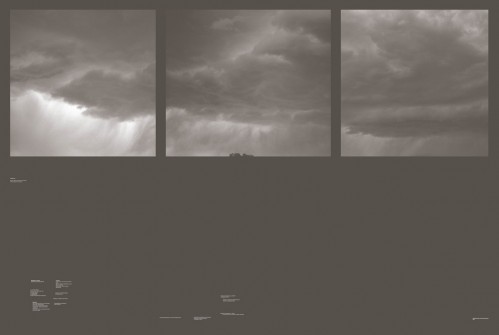
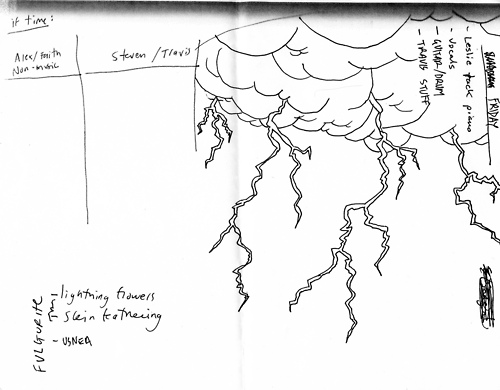
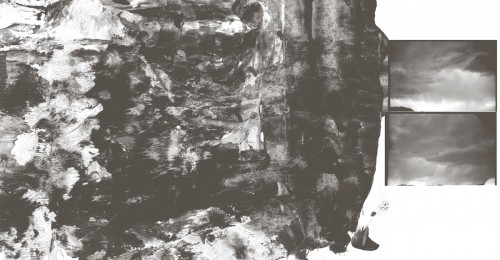
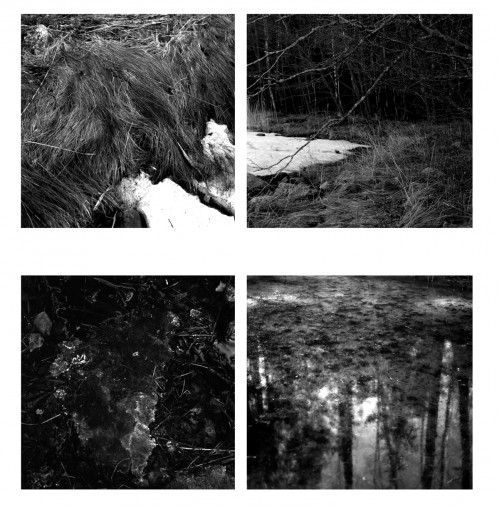
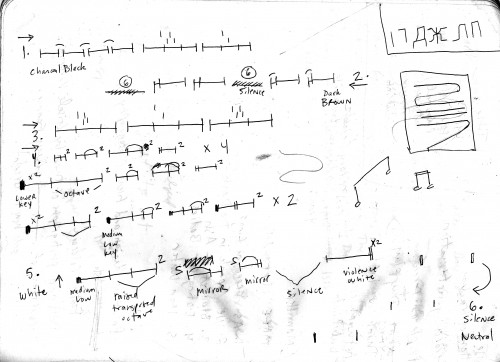



Pingback: Transmission | An Interview with Niels Geybels: Sequences, Monoliths, and Beneath the Earth | Art21 Blog
Pingback: An Interview with Niels Geybels: Sequences, Monoliths, and Beneath the Earth | wavelengths
Pingback: Contemporary – modern music | 阿木 譲 a perfect day